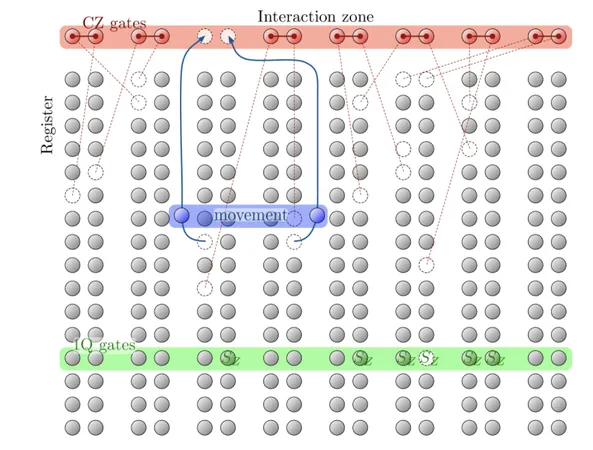
Breakthrough Simulation Reveals How Mars Obtained Its Moons: A Cosmic Mystery Unraveled!
2024-11-22
Author: Yu
Breakthrough Simulation Reveals How Mars Obtained Its Moons: A Cosmic Mystery Unraveled!
In the vast expanse of our solar system, Earth and Mars uniquely stand out as the only rocky planets adorned with moons. While we are confident that our own Moon resulted from a monumental collision with a Mars-sized protoplanet known as Theia, the origins of Mars’ enigmatic moons, Phobos and Deimos, remain shrouded in mystery due to a lack of direct rock samples from these celestial bodies.
Recent studies and computer simulations have offered intriguing insights into the origins of Mars' moons, presenting two primary theories. One prevalent idea suggests that Deimos and Phobos are captured asteroids from the asteroid belt, which would explain their small size and shape. However, this theory poses challenges. Mars, being a smaller planet with less gravitational influence than Earth or Venus—both of which lack captured moons—would have difficulty ensnaring even one asteroid, let alone two. Additionally, captured moons typically exhibit more elliptical orbits, starkly contrasting with the circular trajectories of Deimos and Phobos.
An alternative theory has emerged, proposing that these moons were born from a cosmic collision. This model suggests that a sizable asteroid or comet—around 3% the mass of Mars—collided with the planet, creating a massive debris ring from which the moons could coalesce. While this scenario accounts for their circular orbits, it raises further complications, particularly regarding the orbital mechanics around Mars.
The latest simulations offer a compelling compromise, suggesting that the moons may have resulted from a close encounter with a large asteroid rather than a direct impact or capture. If an asteroid passed sufficiently close to Mars, the planet's strong tidal forces could disrupt the asteroid, scattering fragments into space. Many of these remnants would enter elliptical orbits around Mars, and over time, subtle gravitational influences from the Sun and other celestial bodies could cause these fragments to collide and coalesce, forming a debris ring that could evolve to produce Phobos and Deimos. This theory not only reconciles the existing paradoxes of the earlier models but also explains the moons' current orbits.
Yet, while this new perspective shines a light on possible origins, the ultimate resolution of the moons’ mystery hinges on direct study. Excitingly, NASA’s Mars Moons eXploration mission (MMX) is scheduled to launch in 2026, with plans to explore both moons and, crucially, collect samples from Phobos. This mission promises to bring humanity one step closer to unlocking the buried secrets of Mars’ intriguing companions, opening up new realms of understanding about not just Mars but the history of our solar system itself.
Stay tuned, as soon we might finally unveil the secrets behind Deimos and Phobos—the captivating shadows that orbit the Red Planet!


 Brasil (PT)
Brasil (PT)
 Canada (EN)
Canada (EN)
 Chile (ES)
Chile (ES)
 España (ES)
España (ES)
 France (FR)
France (FR)
 Hong Kong (EN)
Hong Kong (EN)
 Italia (IT)
Italia (IT)
 日本 (JA)
日本 (JA)
 Magyarország (HU)
Magyarország (HU)
 Norge (NO)
Norge (NO)
 Polska (PL)
Polska (PL)
 Schweiz (DE)
Schweiz (DE)
 Singapore (EN)
Singapore (EN)
 Sverige (SV)
Sverige (SV)
 Suomi (FI)
Suomi (FI)
 Türkiye (TR)
Türkiye (TR)